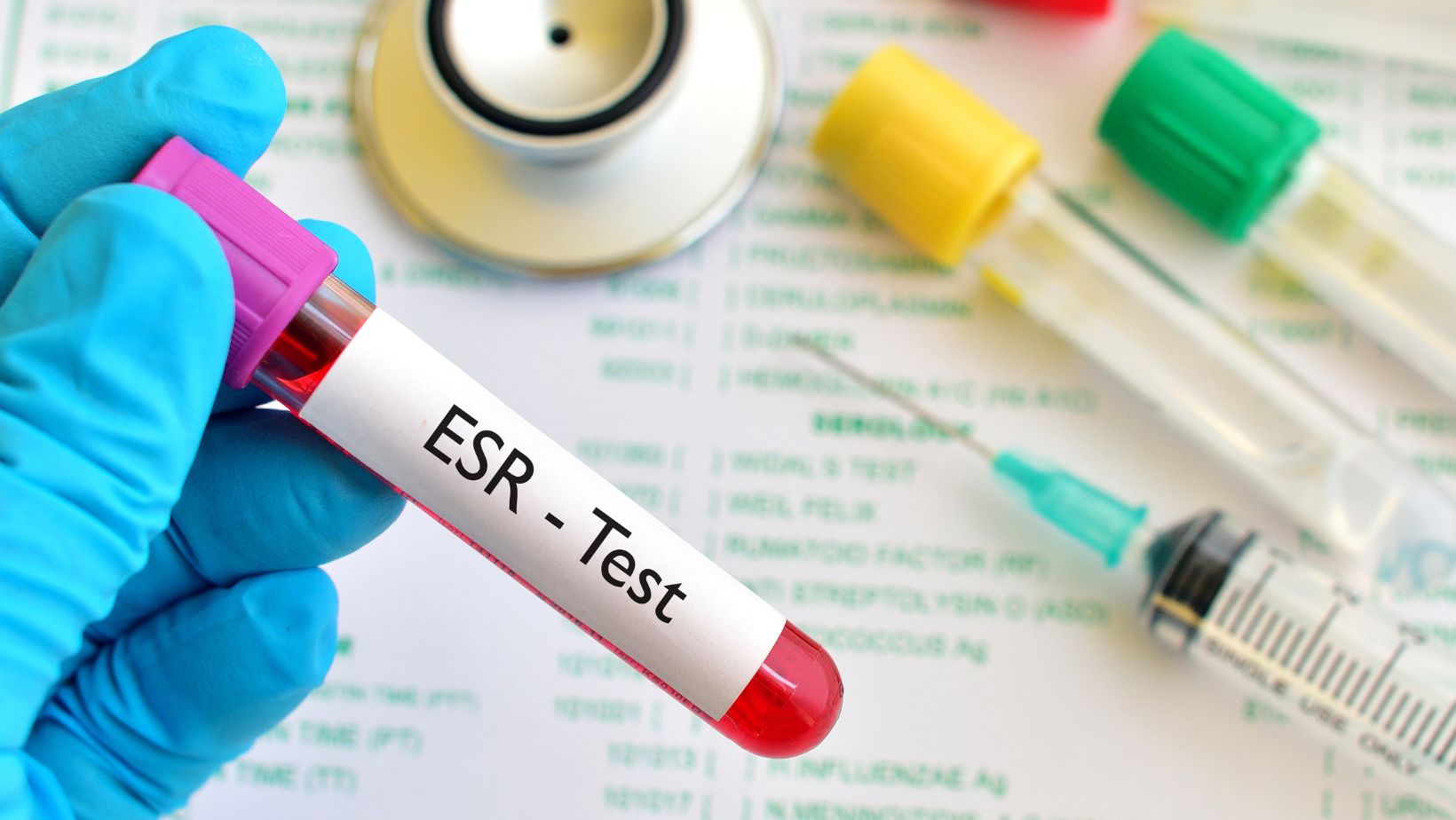
It is absolutely astounding how far we have come as a species, from discovering fire and inventing the wheel to selling sliced bread and developing the Erythrocyte Sedimentation Rate (ESR) test.
This very common and useful blood test is a crucial diagnostic tool in medicine, helping to evaluate and monitor various health conditions. It provides valuable information about inflammation that might be caused by conditions such as arthritis, infections, and autoimmune diseases, as well as disease progression in patients with known inflammatory or autoimmune conditions.
Join us as we learn more about it.
A Beginner’s Guide To The ESR Test
To sum it up, the ESR blood test is a straightforward procedure that measures the rate at which red blood cells (erythrocytes) settle at the bottom of a vertical test tube containing an anticoagulant to prevent clotting. During the test, the blood sample is placed in the tube and allowed to stand for one hour. The rate at which the red blood cells descend to the bottom of the tube is then measured and recorded.
In a healthy individual, red blood cells settle slowly due to their relatively low density. When inflammation is present in the body, proteins in the blood increase, causing red blood cells to clump together and settle faster.
Even though an ESR test is commonly used to detect inflammation, it is not specific to any particular disease; instead, it serves as a general indicator of inflammation. Elevated ESR levels typically prompt further testing and evaluation to help identify the exact cause of the inflammation.
Of course, the result is compared to standard reference ranges, which can vary depending on age, sex, and other factors.
What Do the Results Mean?
The ESR test results are reported in millimetres per hour (mm/hr). Normal ESR values can vary based on age, gender, and individual health factors. Generally, normal ranges are up to 15 mm/hr for men, up to 20 mm/hr for women, and vary by age for children.
Possible Causes Of High ESR Levels
Elevated ESR levels can signal the presence of a range of conditions, including:
· Infections: Bacterial and viral infections often lead to increased ESR as the body’s inflammatory response is activated.

· Autoimmune Diseases: Conditions like rheumatoid arthritis, lupus, and vasculitis can cause elevated ESR due to chronic inflammation.
· Chronic Diseases: Diseases such as tuberculosis or certain cancers can also lead to higher ESR readings.
· Inflammatory Conditions: Conditions such as inflammatory bowel disease (IBD) or chronic kidney disease can contribute to an increased ESR.
Interpreting Low ESR Results
Low ESR levels are less commonly discussed but can also provide insights into certain health conditions. Some potential causes for low ESR include:
· Polycythemia: An increased number of red blood cells can lead to a lower ESR.
· Sickle Cell Disease: In this condition, the shape of red blood cells affects their sedimentation rate.
· Heart Failure: Chronic heart conditions can sometimes be associated with lower ESR levels.
· Medication Effects: Certain medications, such as corticosteroids, can affect the ESR results.
Criteria For ESR Testing: Who Should Be Tested?
An ESR test can be useful in various clinical situations. For instance, if someone presents with unexplained symptoms like fever, pain, or swelling, an ESR test may assist in diagnosing conditions that cause inflammation.
Additionally, for individuals with chronic diseases such as rheumatoid arthritis, lupus, or other inflammatory conditions, the ESR test can be instrumental in monitoring disease activity and evaluating the effectiveness of treatment. It also plays a role in diagnosing certain diseases, particularly when used in conjunction with other tests, such as temporal arteritis, polymyalgia rheumatica, and some infections.

Moreover, ESR is valuable for evaluating conditions with unclear etiology (cause or origin of a disease or condition), helping doctors investigate underlying causes when symptoms do not clearly indicate a specific diagnosis..
Limitations Of The ESR Blood Test
While the ESR test is a valuable tool for detecting inflammation, it does have its limitations. One major limitation is that it cannot specifically identify the exact illness or condition causing the inflammation.
Additionally, the results of the ESR test can be influenced by various factors, such as age, pregnancy, and anemia. These factors can sometimes lead to misleading or less accurate information.
Endnotes On Erythrocyte Sedimentation Rate Testing
If you or a loved one is undergoing an ESR blood test, it is essential to have a detailed discussion with your healthcare provider about the results. Understanding what the results mean in the context of your overall health is crucial, as ESR levels can be influenced by a range of factors and conditions.
Your healthcare provider can interpret the findings in conjunction with other diagnostic tests and your clinical history to provide a comprehensive assessment. They will also guide you on any necessary follow-up actions or further evaluations required to address any underlying health issues identified through the ESR test.












